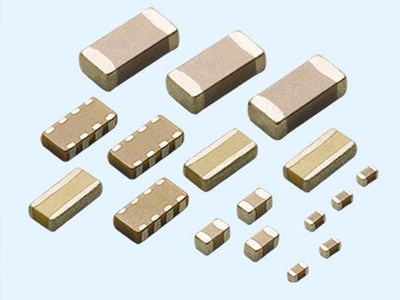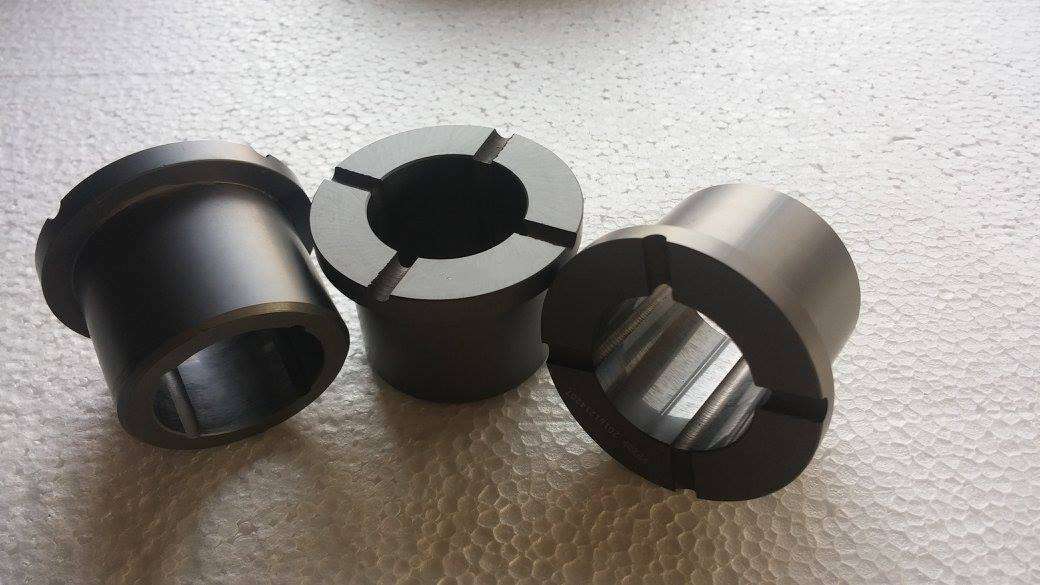Multilayer ceramic capacitor refers to the ceramic diaphragm produced by the casting (or rolling film) process, firstly printing dozens or hundreds of electrode patterns, and then interlacing many layers of such diaphragms, using poly vinyl butyral (PVB) solution bonding, precise positioning, and laminating pressure form a whole. After cutting, removing the binder, and sintering to form a monolithic structure, a multilayer ceramic capacitor is made after the terminal electrode is made.
Multilayer ceramic capacitor is the earliest electronic chip component, English MLCC (Multilayer Ceramic Capacitor). Stacked capacitors are leadless (lead wire), also known as surface mount components (devices), commonly known as chip components (devices), suitable for surface mount (installation, assembly) technology.
1. Electrode materials for multilayer ceramic capacitor
Various capacitor ceramics can be used to manufacture multilayer ceramic capacitor. According to its sintering temperature, it can be matched with different electrode materials. The multilayer ceramic capacitor is divided into three types: high temperature sintered type. That is, the sintering temperature is higher than 1300℃, and the electrode material must be made of high temperature resistant metals such as Pt and Pd. The cost of the product is expensive, and it is only used in a special machine. Medium temperature sintered type. That is the sintering temperature is 1000~1250℃, and Ag/Pd alloy electrodes are used. Low temperature sintered type. That is, the sintering temperature is as low as 900°C or lower, The use of all Ag electrodes or Ag/Pd alloy electrodes with low content of Pd greatly reduces the cost of multilayer ceramic capacitor.
2. Structural features and manufacturing process of multilayer ceramic capacitor
The result of the interleaving of electrodes in the multilayer ceramic capacitor is to increase the effective area of the component and improve the impact resistance of the component.
The manufacturing process is as follows: Raw materials (ceramic powder, additives, binders, solvents)——Mixing of raw materials (ball mill)——Casting molding——Drying and sorting of blanks——Cyclic pressurization, printing internal electrodes——Stale, isostatic pressing——Cutting, debinding——Sinter——Upper electrode (immersion silver) ——Upper electrode (three-layer plating)
Multilayer ceramic capacitor is the earliest, largest, and fastest-growing chip components in the world. It is characterized by the following aspects:
① A type of high dielectric constant, small size, large capacity, volume ratio up to 10μF/cm3;
② One type of temperature compensation, with various capacity temperature coefficients and high Q value;
③ No polarity, high insulation voltage and insulation resistance;
④ The internal electrode is set inside the dielectric ceramic, which has good moisture resistance.
Multilayer ceramic capacitors MLCC are widely used in oscillation, coupling, filtering and bypassing in various electronic complete machines, especially high-frequency circuits. For example, a laptop computer has about 180 chip components; in a mobile phone, there are about 400 chip components, of which about 200 MLCCs are used.
In order to adapt to the development of digital, high-frequency, multi-functional and portable electronic machines, miniaturization, high-function and high-frequency are the main trends in the development of global laminated devices.
① Miniaturization
Passive components keep up with the pace of miniaturization of electronic products, and their sizes are getting smaller and smaller.
② High frequency
With the development of the information and communication industry to high frequency, such as the development of the communication industry to 5.8 GHz, it is required that ceramic capacitor can be used 5. 8GHz.
③ Multifunctional components
Combine several same or different (capacitor/resistor/inductance) components with each other to integrate them into a multifunctional component, which can be large this greatly reduces assembly costs, increases the unit price of components, improves product reliability, and also contributes to the miniaturization of electronic products. The integration of laminated components is promising in terms of greatly reducing the area of circuit boards, reducing the size of electronic products, reducing quality, and increasing product functions.
④ Reduce production costs
In the case of high precious metal prices, develop a lower sintering temperature, reduce the amount of precious metals Pd and Ag, and open the use of other metals such as copper and nickel can greatly reduce production costs.

Multilayer ceramic capacitor
Declaration: This article is provided by CERADIR™ users or obtained from Internet, the content does not represent the position of CERADIR™. We are not responsible for the authenticity/accuracy of the article, especially the effects of the products concerned. This article is for study only, it does not constitute any investment or application advice. For reprinting, please contact the original author. If it involves the copyright and/or other issues, please contact us and we will deal with it asap! CERADIR™ has the interpretation of this declaration.







